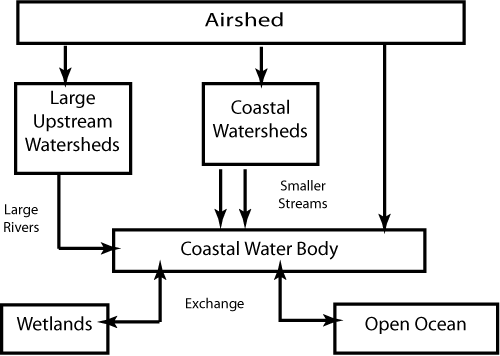


 |  |  | State of the art of research regarding marine eutrophication |
The response of coastal ecosystems to nutrient loading is a central theme in estuarine research [343], especially the role of nutrients (N, P, and Si) in limiting the growth of phytoplankton. Substantial changes in nutrient loading have occurred, especially during the last century. Large increases in nutrient loading associated with increases in population growth, changes in agricultural practices including the increased use of inorganic fertilisers, changes in collection and treatment of sewage, and increases in nitrate deposition from the atmosphere have occurred. In the last decade, major reductions in P loading through better sewage treatment, with a more or less maintained N loading have occurred. These changes in nutrient loadings and ratios have affected the productivity of coastal and marine waters and have changed the potential limiting nutrients in governing system production [99]. These questions are also important in Scandinavia where the assessment of nutrient loadings and their effects on the Baltic Sea ecosystem are co-ordinated at high international levels [227]. Scientists from the Nordic countries are at the forefront of determining the role of nutrient loading in governing ecosystem functioning (e.g. [266][54][149]).
What are the goals of this book? The present text attempts to improve the understanding of traditionally separated fields of science, all contributing and determining the eutrophication of rivers and coastal ecosystems: (a) atmospheric deposition, (b) agriculture and land use, (c) point source emissions, i.e. sewage discharge from urban areas and industry (Figure 4). Despite the fact that points a-c determine the state of aquatic ecosystems and have been intensively investigated per se, no strong endeavours have been undertaken to couple these processes in an integrated manner. Much of the details are present, but the grand view is missing. This text attempts to make a contribution to achieve this ambitious, but never-the-less crucial goal: to view the eutrophication of streams and coastal areas and human activities in the catchment areas and beyond (atmospheric deposition) in a balanced and concurrent manner.

 |  |  | State of the art of research regarding marine eutrophication |